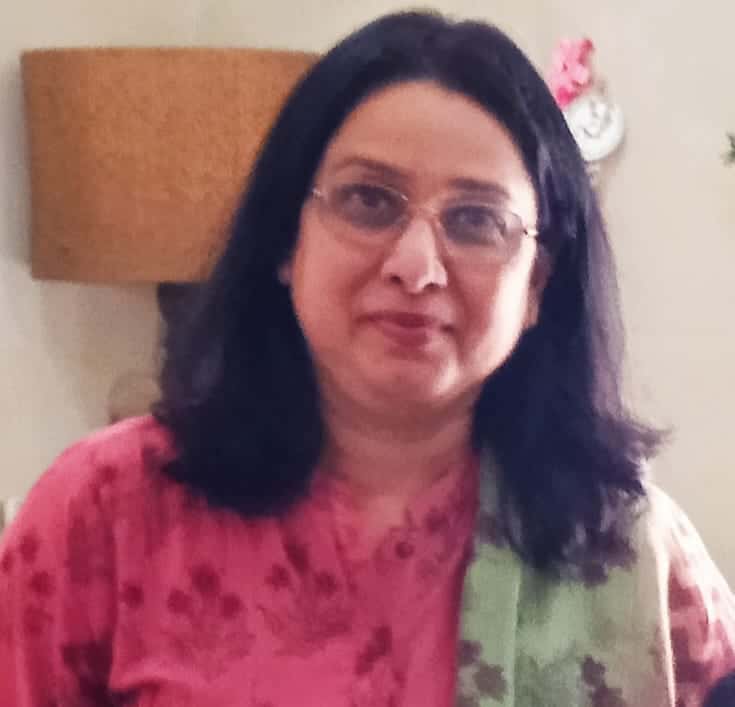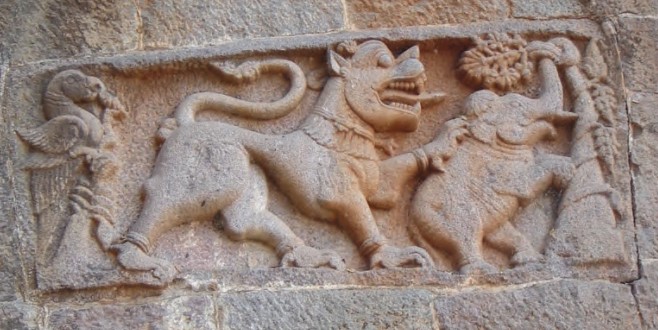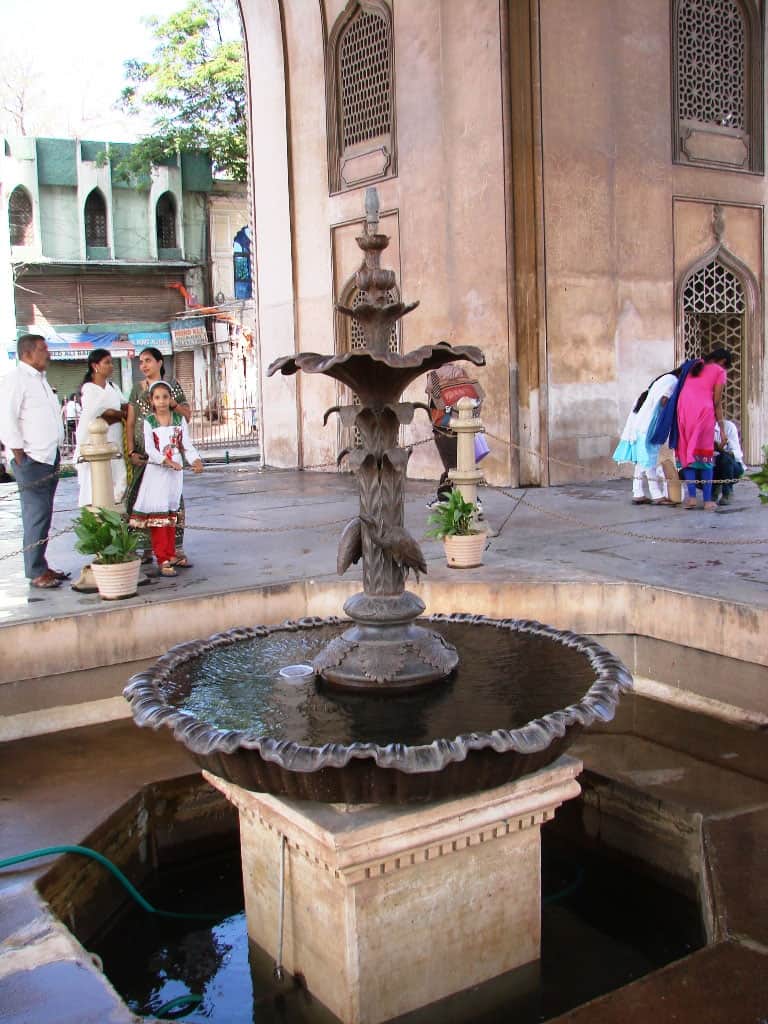
The new city of Haidarabad that came up under the Qutb Shahis in the late sixteenth century soon developed as a pre-eminent metropolis gaining international recognition and status. It was dotted with beautiful monuments and palaces that were comparable to the best in the world. Persian and South Indian artisans and architects who worked on these mega building projects came together to produce a new genre in Indo-Islamic architecture. Among the landmarks that were constructed by the Qutb Shahi sultans were gateways, royal palaces, mosques, minarets, tombs, sarais, ashurkhanas, bridges and elaborate gardens and tanks.
What is left of the grandeur of the Qutb Shahis at present in Hyderabad are–the Golconda Fort, Qutb Shahi necropolis, Charminar-Charkaman, Mecca Masjid, Toli Masjid, Hayatnagar Sarai and Badshahi Ashurkhana of which the monument of Charminar occupies a place of pride. A lot has been written about the architectural proportions and aesthetic stucco design of the Charminar but there are still some intriguing mysteries which need to be unravelled.
Let us restrict the analysis to the cistern-fountains in the Charminar and the Char-su-ka-Hauz which formed the centre point of the radius of the Charkaman. The central area of the Charkaman was known as the Jilau Khana or royal vestibule as the whole vicinity comprising the Charminar-Charkaman-Char-su-ka-Hauz formed the most significant area after the Golconda Fort. It was beyond this grand central piazza that other beautiful monuments and magnificent royal palaces were constructed.
In the development of the new city of Haidarabad, the Charminar was the first monument that was completed in 1591. Many historians who have worked on the architectural traditions of the Qutb Shahis consider the Charminar to be a chaubara or a city square. The Charminar, which was constructed around the same time as the palaces, had a large cistern at its centre floor which either was for ornamental purpose or was perhaps used as a tank for ablution before offering namaz at the mosque located on the second floor. It is still not certain how operational this mosque would have been.

According to Khwaja Owais Qarni, the fountain in this particular cistern had two elephants and two lions spraying water over one another. The Qutb Shahis used the lion-elephant combo motif or relief at different locations. Even on the Patancheru Darwaza of the Golconda Fort these animal figurines are seen in various postures. It is not surprising that even the palaces in the central square area used the architectural tradition of the cistern-fountain in their palace-garden complexes. The lotus design on the central roof of the Charminar was symbolic of a flower being afloat on water and was in consonance with the water sprayed by the animal figurines of elephant and lion into the large cistern.[1] The information that is available is that these animal figurines were removed by the Mughals when the city of Haidarabad was finally sieged in 1687, and unfortunately even the cistern in the Charminar was filled up in 1958.[2]
In corollary, there is another point of view that states, as recent as the 1980s, since the cistern-fountain of the Charminar had become redundant as a garbage dump, it was decided that it should be filled up. Eminent heritage enthusiast Sajjad Shahid is of the view that S P Shorey who was the town planner at Hyderabad Urban Development Authority (HUDA) during the 1980s-90s had taken care to relocate this fountain to the Golconda Fort.[3]

Thus, this fountain found refuge in the Golconda Fort for many years. A few years ago when some heritage loving authority thought of re-excavating the cistern in the Charminar, the fountain was brought back and re-installed.
Having said that, there seems to be a tangle with dates that needs to be addressed in this context. The two dates of filling up the cistern that we have before us are—1958 and 1980s. Whatever be the actual date of filling up the cistern be that as it may, the present fountain which was reinstalled on 27th September 2001[4] has two pelicans at the base facing in opposite directions. This bronze fountain is considered to be the original Qutb Shahi fountain as per oral traditions and probably even some town planning reports. This leads us to the second tangle which is if the original fountain with the lions and elephants spraying water was destroyed by the Mughals in 1687, the present fountain with the pelicans at the base seems to be either a Mughal or an Asaf Jahi import. We will return to this unanswered question after taking a look at the fountain in the Char-su-ka-Hauz.
Now moving into the Charkaman central square of the four arches spanning the road in four directions built 350 feet equidistant, we find right in the centre of this square another cistern built by the Qutb Shahis which was earlier known as the Char-su-ka-Hauz. This cistern-fountain was also a pointer to the four cardinal points which represented the central square of this quadrangle which was meant to be a replica of paradise.[5] S A A Bilgrami says the Qutb Shahi sultans used to sit on the balcony of the royal palace facing this cistern. Later on during the Asaf Jahi times, this cistern came to be known as the Gulzar Hauz, a fountain tank with roses. The terrace surrounding this cistern-fountain was demolished in 1895 during the sixth Nizam Mir Mahboob Ali Khan’s period while widening the road and iron fencing was fixed on its border. This originally twelve sided reservoir which was diminished to an octagonal shape had served the purpose of quenching the thirst of the Qutb Shahi armed guards stationed near the royal palaces.[6] At present the cistern has been reduced to merely a much smaller round shape. The fountain installed by the Qutb Shahis in the original Char-su-ka-Hauz is no longer traceable. Whether it was also destroyed by the Mughals along with the Charminar fountain is not known.
Another Qutb Shahi fountain is seen in the present High Court of Telangana premises which was located earlier in the Victoria Zenana Hospital compound. This tall fountain made of black basalt standing on a base does have elephant and lion figurines on it as is cited about the original Charminar one but on no plausible account it can be assumed to have been the original Charminar fountain for the following reasons: The Charminar fountain was supposed to have the two lions and two elephants spraying water on one another, while in this fountain the lions and elephants are spraying water outside into the cistern. As said earlier, the elephant-lion relief motifs were used by the Qutb Shahis at multiple locations in the kingdom. Also, historical traditions show that the black basalt fountain was credited to have been in the Ameen Bagh palace belonging to a prominent nobleman of the Qutb Shahi period. Nevertheless, it cannot be totally discounted that this particular fountain was relocated here from another venue.
After laying bare these facts about the two missing fountains in question, the Charminar one and the Char-su-ka-Hauz one, it is to be ascertained if the young sixth Nizam Mir Mahboob Ali Khan’s intervention in the Charminar in 1889 of fixing four clocks on all the four sides of the monument would have also included replacing the lion-elephant fountain destroyed by the Mughals with the pelican fountain in bronze as it was during his time that the Char-su-ka-Hauz was also altered. This could be a good example of intervention architecture which subsequent rulers often indulge in to create new designs and new names on older monuments. This leads us to another question if such interventions imply continuity of one regime to another.
[1] Qarni, Khwaja Owais, Sketches of Hyderabad, Mesco-Media, Hyderabad, 1990, p. 44
[2] Ibid, p.34; 44
[3] S.P.Shorey was the author of the Ford Foundation Study of Hyderabad architecture. His contributions to Hyderabad’s heritage are innumerable.
[4] Times of India newspaper report, Charminar to get its fountain back, 13th September 2001
[5] Nigam, M.L., Romance of Hyderabad Culture, University of Michigan 1997, reprinted by Deva Publications, 2008, p.8
[6] Bilgrami, S.A.A., Landmarks of the Deccan, Asian Educational Services, Reprint Madras, 1992, p.21
Salma Ahmed Farooqui is Professor at H.K.Sherwani Centre for Deccan Studies, Maulana Azad National Urdu University, Hyderabad. She is also India Office Director of the Association for the Study of Persianate Societies (ASPS).

